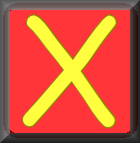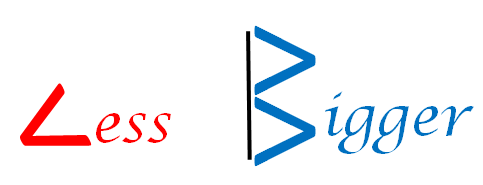
 |
Inequalities - Level 1Check that you know what inequality signs mean and how they are used to compare two quantities. |
Choose the correct inequality or equals sign from the dropdown box between the two numbers.
If you make a mistake, click on the inequality/equals sign to make another choice.
InstructionsTry your best to answer the questions above. Type your answers into the boxes provided leaving no spaces. As you work through the exercise regularly click the "check" button. If you have any wrong answers, do your best to do corrections but if there is anything you don't understand, please ask your teacher for help. When you have got all of the questions correct you may want to print out this page and paste it into your exercise book. If you keep your work in an ePortfolio you could take a screen shot of your answers and paste that into your Maths file. |
||
|
|
||
|
|

|
More Activities: |
|
Mathematicians are not the people who find Maths easy; they are the people who enjoy how mystifying, puzzling and hard it is. Are you a mathematician? Comment recorded on the 26 March 'Starter of the Day' page by Julie Reakes, The English College, Dubai: "It's great to have a starter that's timed and focuses the attention of everyone fully. I told them in advance I would do 10 then record their percentages." Comment recorded on the 3 October 'Starter of the Day' page by Mrs Johnstone, 7Je: "I think this is a brilliant website as all the students enjoy doing the puzzles and it is a brilliant way to start a lesson." |
Each month a newsletter is published containing details of the new additions to the Transum website and a new puzzle of the month. The newsletter is then duplicated as a podcast which is available on the major delivery networks. You can listen to the podcast while you are commuting, exercising or relaxing. Transum breaking news is available on Twitter @Transum and if that's not enough there is also a Transum Facebook page. |
|
AnswersThere are answers to this exercise but they are available in this space to teachers, tutors and parents who have logged in to their Transum subscription on this computer. A Transum subscription unlocks the answers to the online exercises, quizzes and puzzles. It also provides the teacher with access to quality external links on each of the Transum Topic pages and the facility to add to the collection themselves. Subscribers can manage class lists, lesson plans and assessment data in the Class Admin application and have access to reports of the Transum Trophies earned by class members. If you would like to enjoy ad-free access to the thousands of Transum resources, receive our monthly newsletter, unlock the printable worksheets and see our Maths Lesson Finishers then sign up for a subscription now: Subscribe |
||
Go MathsLearning and understanding Mathematics, at every level, requires learner engagement. Mathematics is not a spectator sport. Sometimes traditional teaching fails to actively involve students. One way to address the problem is through the use of interactive activities and this web site provides many of those. The Go Maths page is an alphabetical list of free activities designed for students in Secondary/High school. Maths MapAre you looking for something specific? An exercise to supplement the topic you are studying at school at the moment perhaps. Navigate using our Maths Map to find exercises, puzzles and Maths lesson starters grouped by topic. | ||
Teachers | ||
|
If you found this activity useful don't forget to record it in your scheme of work or learning management system. The short URL, ready to be copied and pasted, is as follows: |
Alternatively, if you use Google Classroom, all you have to do is click on the green icon below in order to add this activity to one of your classes. |
It may be worth remembering that if Transum.org should go offline for whatever reason, there is a mirror site at Transum.info that contains most of the resources that are available here on Transum.org. When planning to use technology in your lesson always have a plan B! |
|
|
||
© Transum Mathematics 1997-2025
Scan the QR code below to visit the online version of this activity.
https://www.Transum.org/go/?Num=336
Close

Level 1 - Comparing positive integers
Level 2 - Comparing positive and negative decimal numbers
Level 3 - Comparing positive and negative fractions
Level 4 - Comparing metric measures
Level 5 - Matching statements to number line diagrams.
Level 6 - Solving linear inequalities.
Level 7 - Solving linear two part inequalities.
Level 8 - Matching statements to graphs.
Level 9 - Quadratic Inequalities
Linear Programming - A selection of linear programming questions with an interactive graph plotting tool.
Exam Style questions are in the style of GCSE or IB/A-level exam paper questions and worked solutions are available for Transum subscribers.
> means greater than (the number on the left of this sign must be more than the number on the right).
< means less than (the number on the left of this sign must be less than the number on the right).
= means equals (the number on the left of this sign must have the same value as the number on the right).

It is easier to compare two (fractions with quite different denominators) by converting them both to decimals. Do this by dividing the top (numerator) by the bottom (denominator).
1 kilometre (km) = 1000 metres (m)
1 metre (m) = 100 centimetres (cm)
1 centimetre (cm) = 10 millimetres (mm)
1 kilogram (kg) = 1000 grams (g)
1 litre (l) = 1000 millilitres (ml)
1 hour = 60 minutes
Answers to this exercise are available lower down this page when you are logged in to your Transum account. If you don’t yet have a Transum subscription one can be very quickly set up if you are a teacher, tutor or parent.
Close
